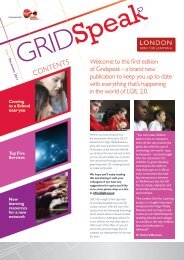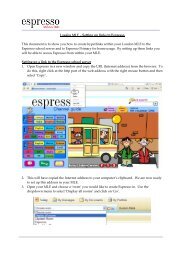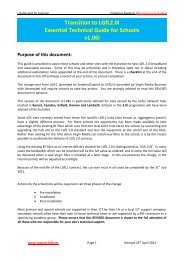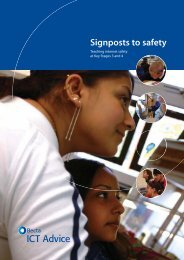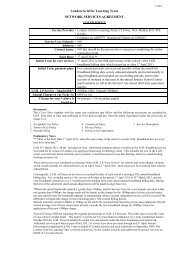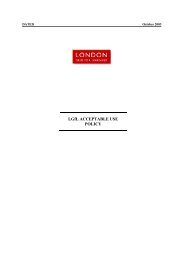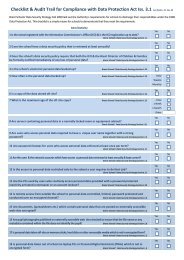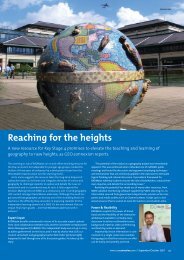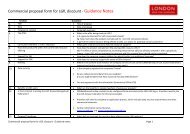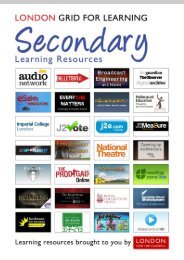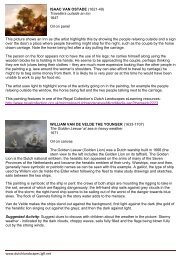Say no to bullying
Say no to bullying
Say no to bullying
You also want an ePaper? Increase the reach of your titles
YUMPU automatically turns print PDFs into web optimized ePapers that Google loves.
cracking. Children could test a range of materials including, for example, bubblewrap, cot<strong>to</strong>n wool, and foam padding.Activity 2Objectives are as for QCA Science Unit 1E Pushes and pulls.Discuss how syringes and tubing (pneumatics) might be used <strong>to</strong> make an objectmove or fall off a box – experiment using the children’s ideas. Explain that thistechnique will be used <strong>to</strong> make Humpty Dumpty (beaker with picture on) fall off awall (made from a box). The children should experiment with syringes and tubing<strong>to</strong> make Humpty move.Ask the children <strong>to</strong> think of a test which they could carry out, for example, doesthe length of the tubing/size of the syringe affect the speed of Humpty’s fall?Encourage them <strong>to</strong> make predictions and explain why (‘I think … because …’).Discuss the results.Music follow-upObjectivesTo explore and express their ideas and feelings about music using movement,dance and expressive and musical languageTo be taught how music is made for different purposesListen <strong>to</strong> some marching music (something the King’s soldiers might march <strong>to</strong>),for example Triumphal March from Aida, Elgar’s Pomp and Circumstance March,Colonel Hathi’s March from The Jungle Book. Get the children <strong>to</strong> discuss how itmakes them feel, and show how they might move <strong>to</strong> this music. Talk about howrepetition and tempo are used <strong>to</strong> encourage a regular marching beat.PE/dance follow-upObjectives are as for QCA PE Unit 2 Dance activities (2).Thought shower the different feelings of Humpty Dumpty at the different points inthe s<strong>to</strong>ry. This will link <strong>to</strong> the suggested literacy and art activities, and thediscussion that children may have had about his feelings at different points, or thefeelings of the different characters.Use these as a stimulus for individual movements. Ask the children <strong>to</strong> think aboutthe dynamics of different feelings, for example, strong, sharp actions when youare cross, moving faster and slower depending on your feeling. Ask the children<strong>to</strong> show and tell you what type of body actions they would use <strong>to</strong> explore thedifferent dynamics. Encourage them <strong>to</strong> vary the speed, strength, energy andtension of their movements, and <strong>to</strong> use different levels and directions. These canthen be linked in pairs and/or small groups <strong>to</strong> build up a short dance framework.The lesson could culminate in the whole class developing a servant’s dance, or acelebra<strong>to</strong>ry party dance. Group dance ideas and formations could be used fromcountry dancing.7© Crown copyright 2005 <strong>Say</strong> <strong>no</strong> <strong>to</strong> <strong>bullying</strong> Years 1 and 2DfES 1340-2005Primary National Strategy



